GALAPAGOS ISLANDS, ECUADOR - APRIL 2007
Part Six of Nine
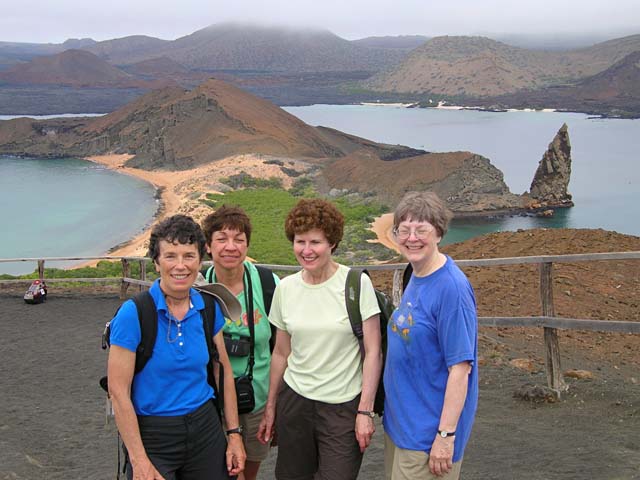
Pat, Margaret, Heather, Shirley at the summit of a once active volcano, with Pinnacle Rock in the
background
on the island of Bartolome.
This island is most likely the
first of the islands to rise from the sea.
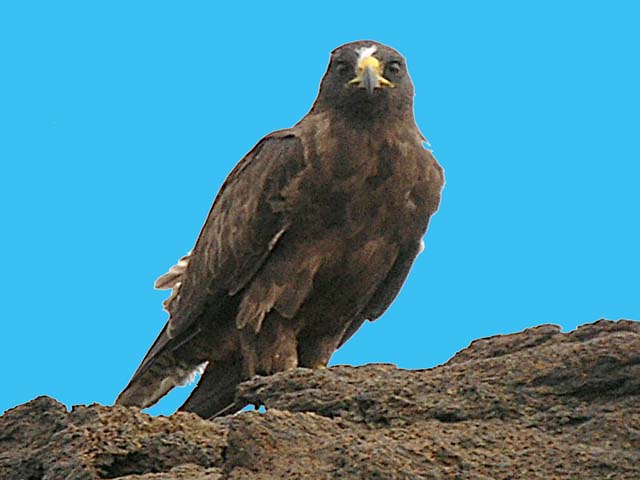
Galapagos Hawk - This endemic hawk is the only raptor that
breeds in the islands. They are dark brown
with yellow legs and feet. They have no natural
enemies. They practice cooperative polyandry,
where a single female has two or more mates,
and all adults help in raising the young.
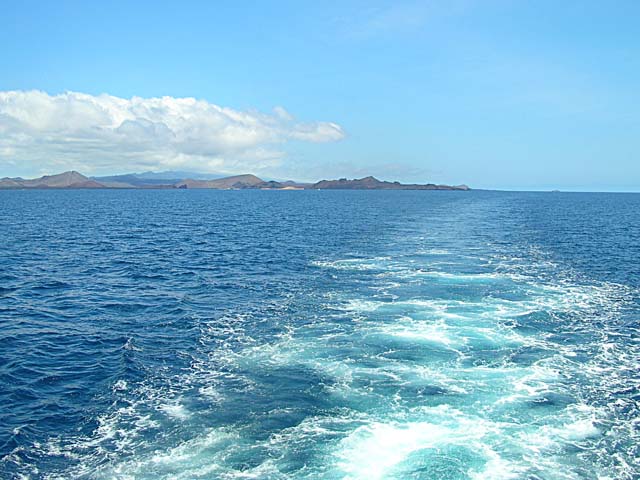
Leaving Bartolome Island and heading toward Black Turtle Cove on
Santa Cruz Island.
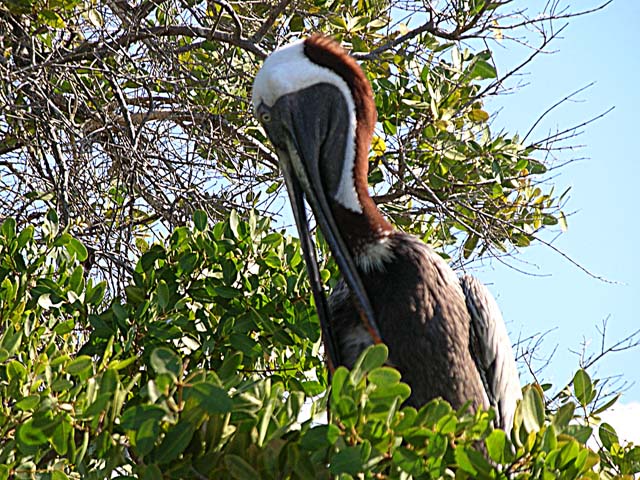
Brown pelican - They have a huge pouched bill and a
6.5 foot wingspan. They feed by shallow plunge
diving and by scooping up as much as 2.5 gallons
of water that rapidly drains out through the bill, and the
trapped fish are swallowed.
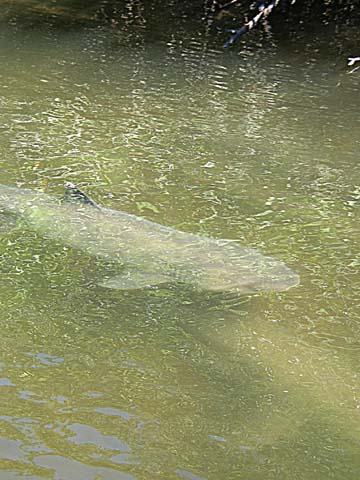
White-tipped reef shark in Black Turtle Cove next
to the panga boat. The most common shark species in the area,
they are found around rocky reefs, under coral heads
and in caves. They are docile sharks that feed at night
that are not thought to be dangerous, in part due to the
abundance of fish. Since we saw them several times in the water
while we
were snorkelling, hopefully that theory is correct.
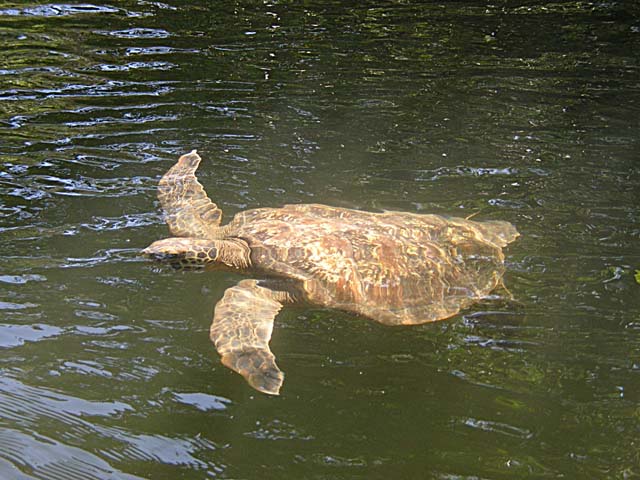
Pacific green sea turtle that we saw from the panga - Breeds and lays eggs
in the Galapagos,
but it is not endemic to the islands.
They are called green because of the color of their flesh.
One of the largest of the turtle species, they range from 2.5
to 5 feet in length and weight up to 450 pounds.
We also saw several in the water when we were snorkelling, but they ignored us.
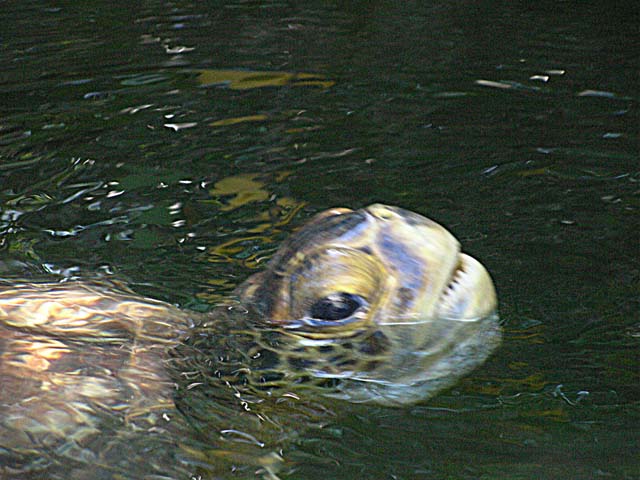
Pacific green sea turtles have paddle-like limbs.
They cannot pull their heads and limbs inside of their shells,
which makes them more vulnerable to predators.
They spend most of their time feeding on algae in the sea
and on grasses that grow in shallow waters. The eggs they
lay in the sand incubate in 50-60 days.
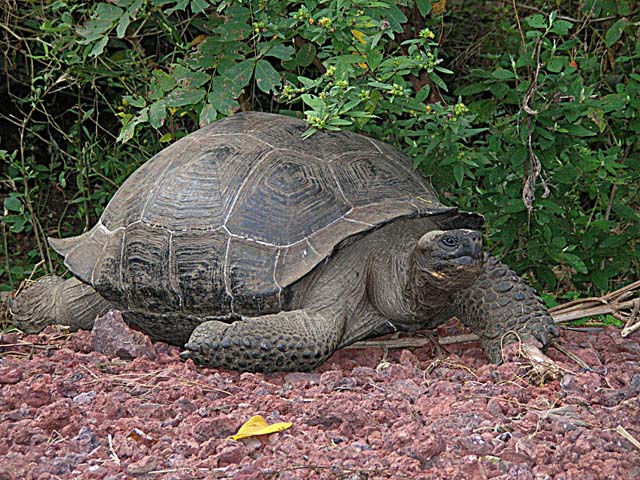
The giant turtoise best symbolizes the Galapagos Islands.
There is only one species of giant turtoise, with 14
subspecies, of which 3 are extinct. An ongoing
breeding project at the Charles Darwin Research Station
appears to be successful.

Turtles cooling off in a pond - Some can reach 550 pounds, but newborns
weigh less than half a pound.
They are vegetarians.
Scientists guess their life span is around 150 years, but it could be longer.
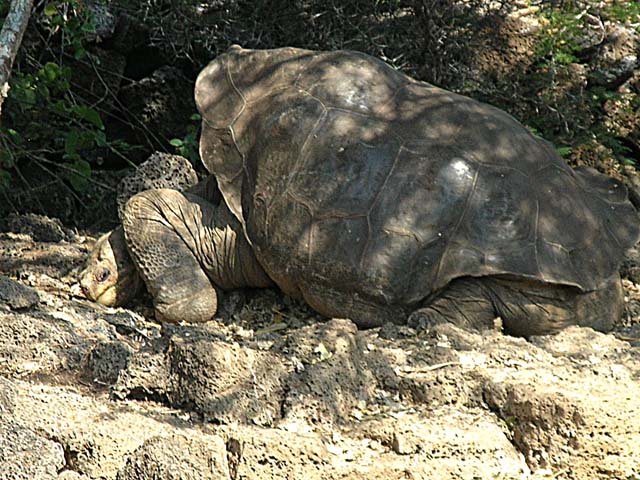
Lonesome George - In 1971 wardens from the Park, who were hunting
non-native goats on an island
in the north, found
a single male turtoise who seemed alone, later named
Lonesome George,
who represents the last of his
sub-species. He was brought to the Darwin Research Station on Santa Cruz Island
and numerous females have been brought to him for
mating, so calling him lonesome is inappropriate.
However, no offspring have
been
produced
to date though not for lack of trying. Lonesome George symbolizes
the crisis
of extinction.
Link to Part Seven of Galapagos
Pat's Home Page